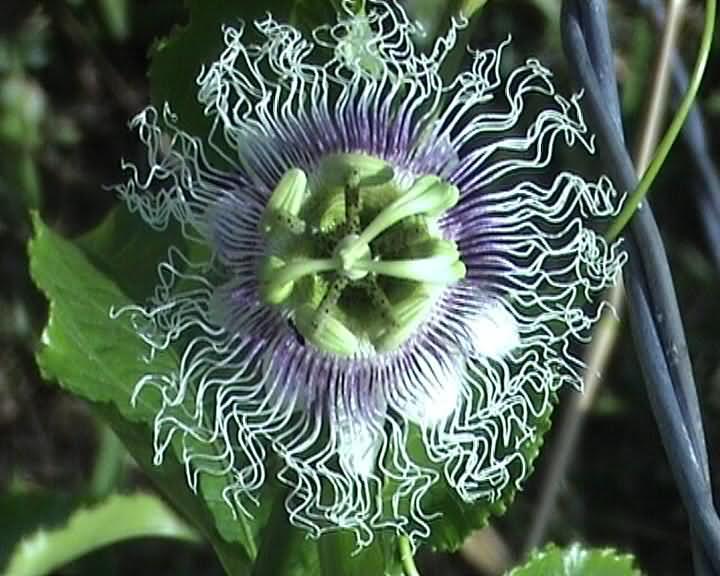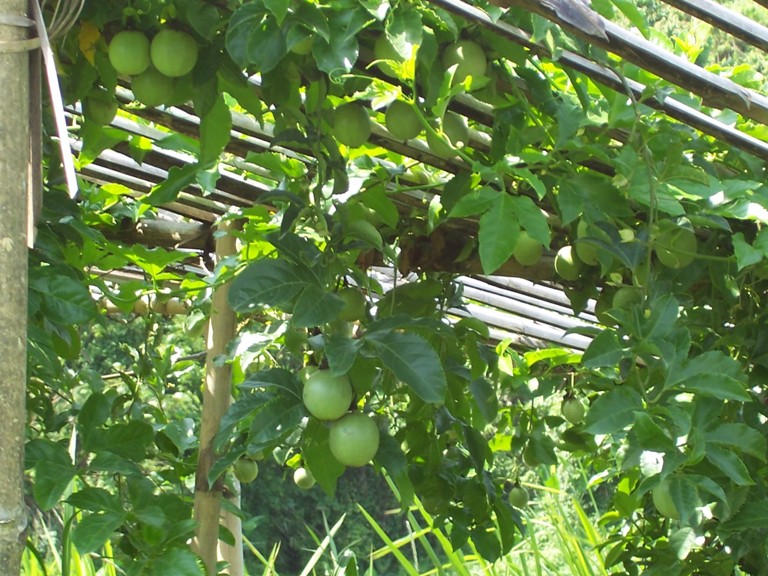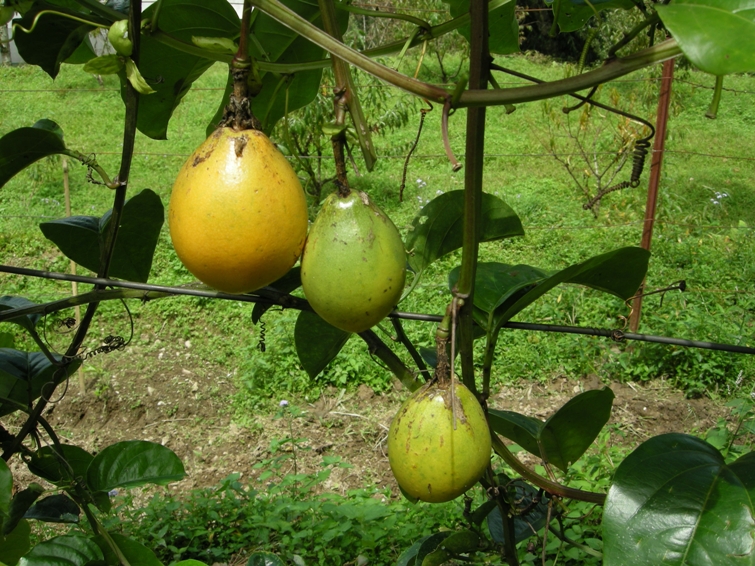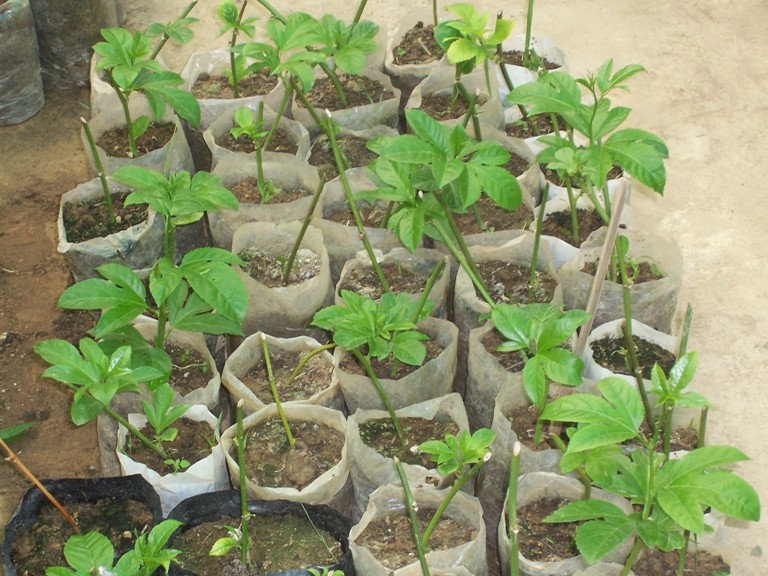भारत में कृष्णा फल यानि पैशन फ्रुट की खेती की तकनीक।
 Passion fruit, a native of tropical America, is known for its exotic and unique flavor and aroma as well as for nutritional and medicinal properties.
Passion fruit, a native of tropical America, is known for its exotic and unique flavor and aroma as well as for nutritional and medicinal properties.
It is mainly grown in Brazil, Ecuador, Columbia, Australia, South Africa, Kenya and Sri lanka. In India, passion fruit is cultivated in some of areas of Nilgiri hill region, Karnataka and north eastern states like Manipur, Nagaland, Mizoram, Arunachal Pradesh and Meghalaya.
It is used primarily for fresh consumption and processed products like juice, squash, jams and jellies. It is also used as a flavouring agent in ice cream.
It belongs to family Passifloraceae containing 12 genera and 550 species. The most important genus Passiflora has more than 400 species.
The cultivation of purple and yellow passion fruit is common in most of the countries. In Australia hybrids between the two forms (yellow and purple) are exploited.
Passion fruit is also known as granadilla. The most popular passion fruit cultivated for their edible fruits are purple passion fruit (Passiflora edulis Sims), yellow passion fruit (Passiflora edulis f. flavicarpa Deg.) and giant granadilla (Passiflora quadrangularis L.).
The cultivation of yellow passion fruit has been over shadowed by the purple passion fruit because of its fruit quality. In tropical regions of India, cultivation of yellow passion fruit and Kaveri is common, whereas purple passion fruit is commonly grown in north eastern states.
It is a tough-stemmed, rapid growing, evergreen perennial vine that climbs by means of long tendrils, which coil around supports. Fruits are round multi-seeded berry weighing about 35g.
The shell is hard and smooth, green at first, ripening to deep purple, and finally becomes crinkled when fully mature. Fruits are filled with pleasantly flavoured aromatic juicy orange-yellow aril contains small, hard, and black seeds . On maturing, fruit falls from the vine.
It is much like the purple type but vigorous in growth. The fruits are slightly larger than the purple and possess white spots. The pulp is somewhat more acidic and the seeds are dark brown rather than black.
The fruits turn yellow during ripening and fall from the vine after attaining full ripening stage. The average fruit weight is around 80g.
Kavery
Kavery is a hybrid variety developed through crossing purple and yellow passion fruit.
Morphologically it is similar to yellow passion fruit but vine produces purple fruit. Fruit size is bigger than purple passion fruit and possesses moderate intensity of aroma.
The giant Granadilla has large leaves, and bears very striking flower. The greenish-yellow fruits of P. quadrangularis resemble melons and are the largest in the genus.
Fruits are 15-20 cm long and about 600g weight. The fruits are oblong, with a delicate aroma and a thin, smooth skin. Fruit contents thick pulp with large seeds.
Climate and Soils for passion fruit cultivation
The yellow passion fruit and giant granadilla are tropical plants, while purple passion fruit is adapted to subtropical conditions and endures a few degrees of winter frost without injury, but will not tolerate severe freezes.
Passion vines prefer almost neutral, (pH of 6- 8) well-drained soil with high organic matter (2%), but the yellow passion vine may tolerate alkaline soils.
Extremes of heat and cold may prove damaging to the vine, high temperatures causing them to grow luxuriantly but with very little fruit setting.
 Planting and training system
Planting and training system
The orchard of passion fruit can be established in square/rectangle system by maintaining row-to-row and plant-to-plant distance of 3 - 4 m x 3 - 4m.
Planting should be done with the onset of monsoon i.e in the month of June-July. Passion fruit can be trained on two-arm kniffin system trellies run in north-south direction to facilitate proper sunlight.
Posts, either bamboo or iron, should be fixed at the distance of 3-4m and on these posts 3-4 wires should be strung by keeping the distance of 30cm between wires.
 Once the vines reach the wire, the tips are pinched to facilitate two leaders and these leaders are directed on either side of the wire, which in turn develops laterals.
Once the vines reach the wire, the tips are pinched to facilitate two leaders and these leaders are directed on either side of the wire, which in turn develops laterals.
These laterals are intended to bear fruits as passion fruits bear fruits only on current season’s growth. Passion fruit can also be trained on pergola system.
In this system vines are spread over a criss-cross network of wire (15-20 cm apart), usually 1.8-2.0 m above the ground, supported by bamboo posts or iron posts.
The vines are allowed to grow single shoot till it reaches to wire. When vine reaches to wire its tip is pinched to facilitate side shoots on the wire.
It is commonly propagated by cutting. However in spite of genetic variability seeds are also used as a propagating material.
Soft wood grafting has been found promising in realizing the advantage of root stock. Yellow passion fruit, tolerant to soil borne diseases, is the most common root stock for purple passion fruit which
Pollination in Passion fruit
Passion fruits are protrandrous (anthers shedding their pollen before the stigmas are receptive) and adapted to cross-pollination by honeybees.
In purple passion fruit and giant granadilla anthesis takes place in the early morning while in yellow anthesis takes place in afternoon. Pollination takes place after 1-2 hours of anthesis when stigma becomes receptive.
Passion Fruit maturity
Purple passion fruit and giant granadilla flower throughout the year but major bloom occur in March-April and July-August.
The yellow passion fruit and Kavery major flowering occurs during May – June and during September-October. Fruits of passion fruits mature between 70-80 days of flowering.
Although purple passion fruits are available throughout the year but major seasons of fruit availability are May-June and September-October.
Nutrient management
The nutrient requirement of passion fruit depends up on the age and stage of growth viz. vegetative growth, plant coming in bearing and full production stage
The approximate nutrient requirement of passion fruit is N 150, P 100 and K 200kg/ha. The nutrient should be applied in splits after fruit harvest.
Harvesting and yield
The economic yield starts after 1-2 year of planting and a healthy plant produces about 150-180 fruits/year. Purple passion fruit produces more fruits than yellow and giant granadilla due to compatibility of pollens.
Approximately 4-6 kg of fruit per plant is likely to be the good production that can be expected from the purple and yellow passion fruit. So in a properly managed orchard the average productivity of passion fruit may be 5-6t/ha.
Both purple and yellow passion fruits begin to lose moisture as soon as they ripen and fell and quickly become wrinkled. The fruits can be stored in polyethylene bags at 7-9°C for as long as 3 weeks without loss.
Since passion fruit is a climacteric fruit and ripening may also take place off the tree, therefore, fully matured fruits (10-11 weeks old) may be harvested and may be kept for ripening.
Physicochemical properties
Among different passion fruits, giant has the maximum fruit weight of 650.0g. Minimum juice content of 12.5% was recorded in giant while in others; juice content varies from 28.0-34.0%. Purple and giant possess intense flavour, which is prerequisite for squash, while others have mild flavour.
| Parameters | Purple | Yellow | Giant |
| Fruit weight (g) | 34.0 | 80.0 | 650.0 |
| Juice (%) | 29.0 | 30.0 | 12.5 |
| Flavour | Intense | Moderate | Intense |
| TSS (ºBrix) | 17.5 | 16.5 | 15.5 |
| Acidity (%) | 2.8 | 3.2 | 2.8 |
| Vitamin C (mg/100ml) | 35.0 | 30.0 | 30.0 |
| Total sugar (%) | 13.5 | 13.2 | 12.5 |
| Self life days | 5-6 | 7-8 | 3-4 |
The major diseases in passion fruits are collar/ root rot, brown spot and woodiness virus. The incidence of diseases varies with the species.
Collar rot is the most common disease of purple passion fruit which can be minimised by using yellow passion fruit as a root stock. The incidence of fruit fly and mite are common in passion fruit.
Tips to increase yield of passion fruits
- Site should have well drained soil with high organic matter content.
- Propagation through soft wood grafting.
- Trellis/Bower system of training
- Maintain one or two main stem
- Pruning of old twigs after fruit harvest
- Mulching to conserve moisture and to minimize soil loss
- Integration of apiculture in the orchard
- Integrated nutrient management with split fertilizer application
- Poison bait to minimize fruit fly infestation
Authors:
Kundan Kishore
Central Horticultural Experiment Station
(ICAR- IIHR), Aiginia, Bhubaneswar – 751019, Odisha
Email:





